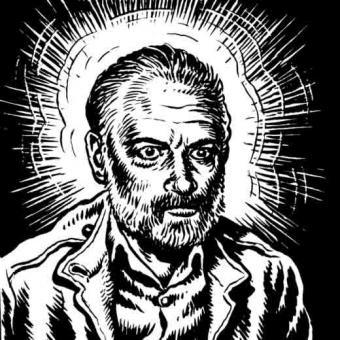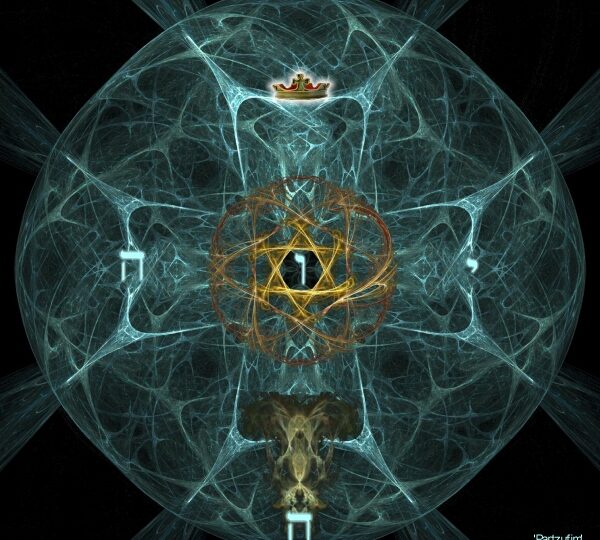
Post-Apocalypto 3
George R. Stewart came out with the speculative fiction Earth Abides in 1949, when the threat of the bomb loomed but the full force of post-apocalyptic mania was yet to hit the mass mind. Stewart was an English professor at UC Berkeley, and his biggest claim to fame before Earth Abides won him some awards was his novel Storm, whose protagonist—a nasty weather system he called “Maria”—inspired the National Weather Service to start using personal names to identify storms. This contribution to our cultural climate is an apt indicator of Stewart’s sensibility, for what marks Earth Abides and makes it resonate today is the novel’s ecological sensitivity, its proto-green consciousness. Everything that happens in the novel, all the stabs the characters make to master or accommodate the loss of technological civilization, happens within a larger context, and that context is the “biological law of flux and reflux.”
As apocalypses go, the one that initiates Earth Abides is pretty mellow. An airborne plague wipes out the vast majority of humankind in a week or so, leaving everything else—including goods and much infrastructure—more or less intact. Our hero, an intellectual loner named Isherwood “Ish” Wilson, weathers the plague while recovering from snakebite in a cabin in the Sierras. He spends the first hundred pages of the novel cruising around a ghost America, including the “beautiful corpse of 5th avenue,” before returning to the East Bay to settle down. In some ways these opening chapters are the best part of the novel, as Stewart follows the twists and turns of Ish’s stressed but functioning psychology against the backdrop of nature’s reclamation of civilization. Cats and dogs resort to tooth and claw, wheat and flowers and ants run riot or die, fences fall and lice addicted to manflesh become extinct. But there’s no feral biker gangs or brawls over moldy bread or shambling armies of the radiated or malformed. In some ways it all seems pleasant, if a bit pointless.
Ish does not go crazy because he is captivated by an intellectual question: “What would happen to the world and its creatures without man?” But faced with the monumental silence of the posthuman world, Ish also feels an understandably nameless dread. He seeks out other survivors, but mostly rejects them as mad or useless. Then he hooks up with Em, a strong if undereducated older woman who, she soon reveals, is black. Writing at a time when separate drinking fountains could still be found in the U.S., Stewart earns his points for this bit of progressive miscegenation. It also reflects the rationalist and nonreligious common sense that undergirds Ish’s whole philosophy of life, and that he in many ways fails to translate to The Tribe, the small community he helps create after he and Em have kids and hook up with a few other breeding adults (including a bigamist and his happy wives).
Far from the ingenious self-sufficient McGuyvers imagined by some of today’s survivalists, The Tribe live as parasites, raiding stores for bullets and clothes, eating canned food, relying on the infrastructure that remains. Gradually, this support system gives in to entropy—the electricity shuts off, the car tires go flat, the reservoirs drain dry. Cans of sardines and peaches rust, their labels faded to illegibility. Ish tries to instill a more proactive sense of foresight into the community, but Stewart is too clear-eyed about human beings to portray more than a mildly creative inertia. Besides, The Tribe is too informal to develop the sort of command structure that might implement Ish’s plans. It is only when the adults decide to kill a threatening outsider, who is lusting after a mentally ill member of the tribe, that they commit an act that, Ish notes, resurrects “the State.” Otherwise, they go with the flow.
Ecological, multiculti, tribal, low-key, and softly anarchistic, Earth Abides is Californian ways than exceed its setting. (California has long been a key site of post-apocalyptic tales, from Huxley’s Ape and Essence to Philip K. Dick’s Dr. Bloodmoney to Ridley Scott’s Blade Runner.) Besides the general Bay Area vibe, “Ish” seems a clear nod to Ishi, the Yahi Indian native who lived a traditional life of hunting and gathering in the Sierra foothills until the unimaginable loneliness of being the last of his tribe drove the man into white society in 1911. In the end, partly through Ish’s prodding, The Tribe evolves into proto-Indians—or proto-hippies really—with bows and arrows, an earnest supernatural respect for weather and beasts, and blue jeans tricked out with bright copper rivets.
Despite its feel for the “basic recuperative powers of the earth,” however, the novel (and Ish’s long life) ends on the Bay Bridge, one of the book’s most important symbolic spaces. At the beginning of the novel, Ish decides to cross the bridge towards SF but realizes halfway that he really just wanted to confront the bridge itself, a symbol of authority and progress now rendered an empty Ballardian hulk where “the white lines on the pavement stretched off unbroken toward their meeting at infinity.” In the end, Ish dies near a little green coupe rusting on the wide expanse, his feelings a poignant mix of lament and release, hope and stoic acceptance—a believable mix for the end of life, and also the end of civilization.
Perhaps there were too many people, too many old ways of thinking, too many books. Perhaps the ruts of thinking had grown too deep and the refuse of the past lay too heavy around us, like piles of garbage and old clothes? Why should not the philosopher welcome the wiping-out of it all and a new start and men playing the game with fresh rules? There would be, perhaps, more gain than loss.




